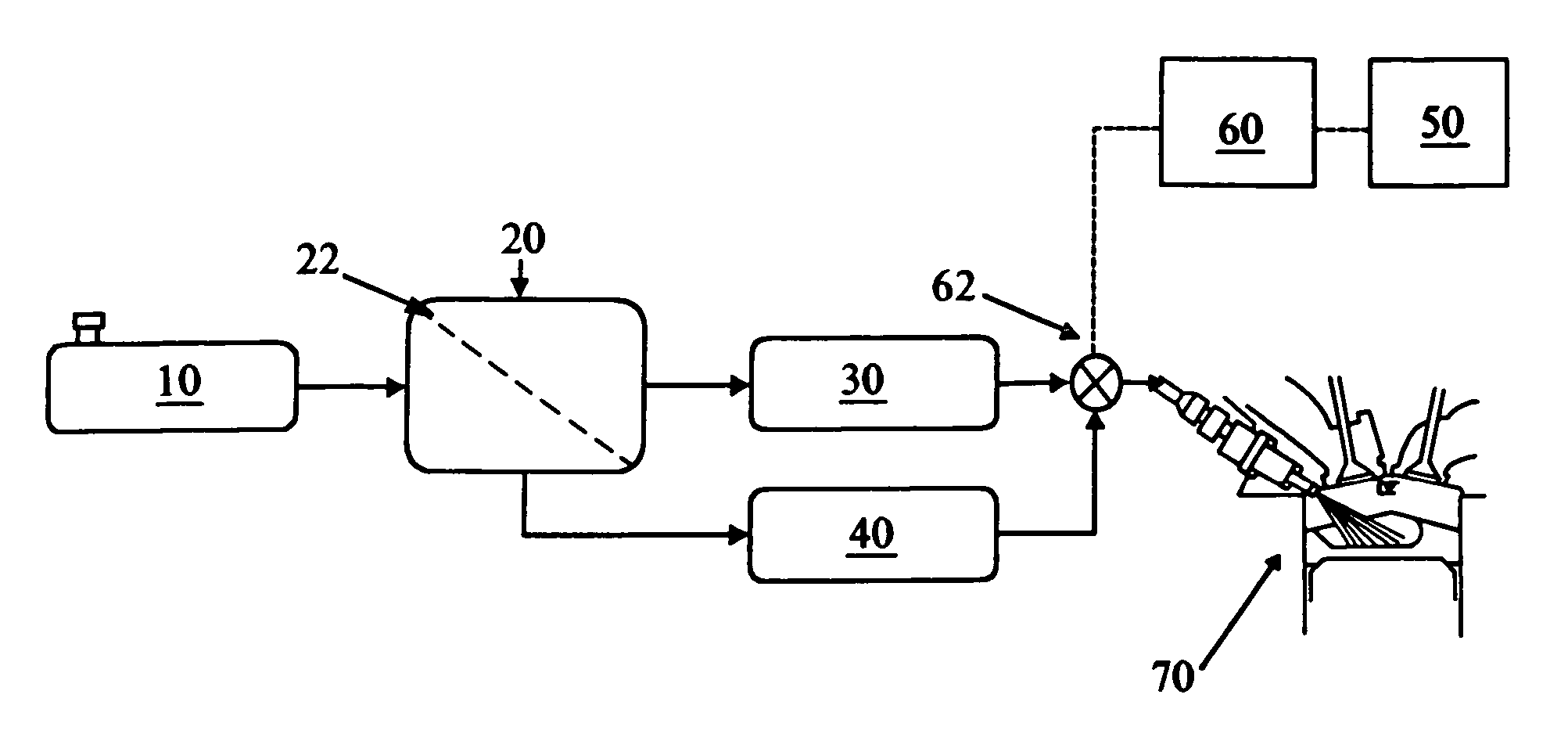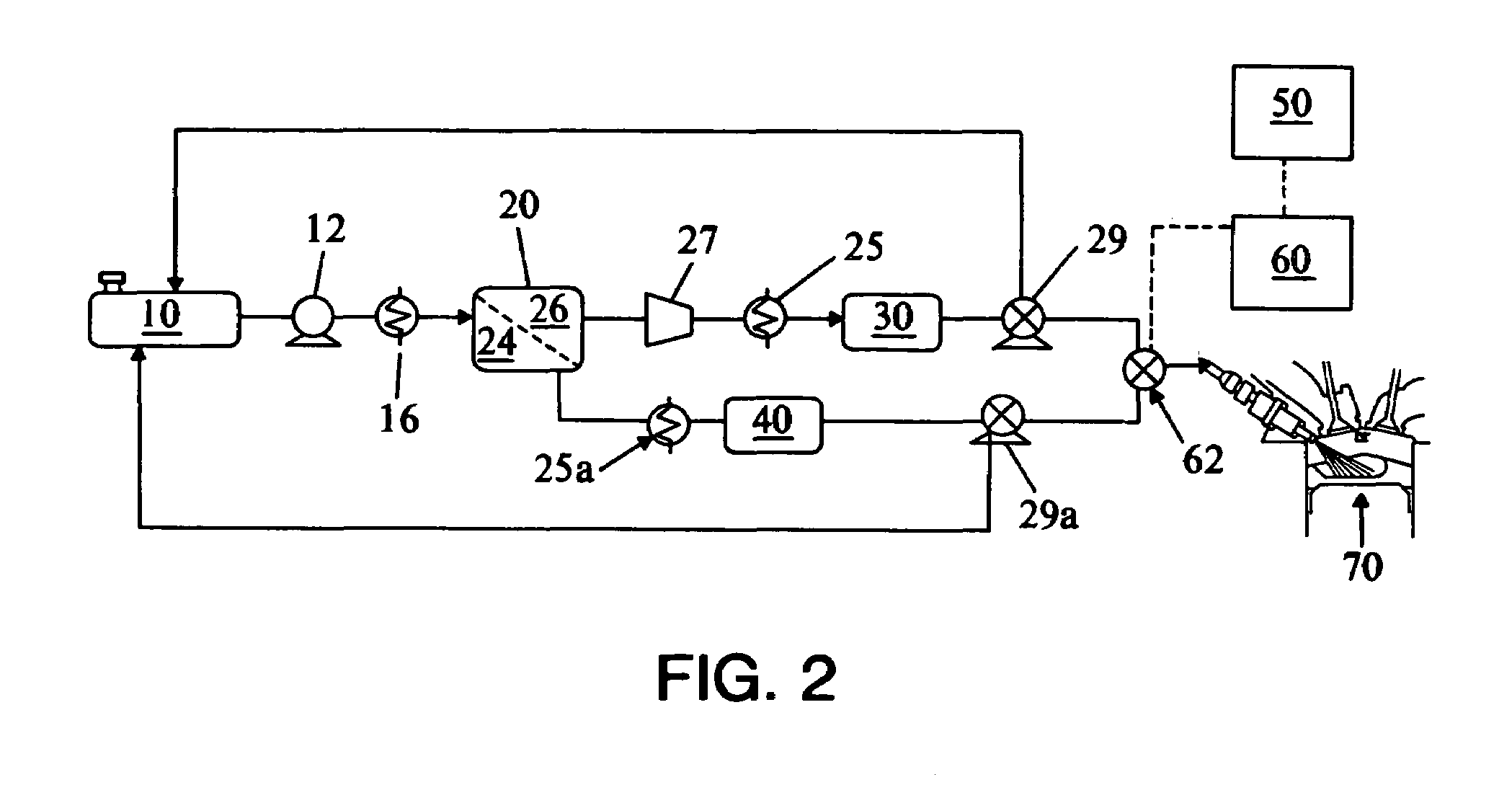Fuel composition supply means for spark ignition engines
a technology of fuel composition and supply means, which is applied in the direction of liquid fuel feeders, machines/engines, mechanical equipment, etc., can solve the problems of limited operation at high compression, engine damage, and detrimental to overall performance at other speed/load conditions, and achieve the effect of improving one or more of fuel efficiency and combustion emissions
- Summary
- Abstract
- Description
- Claims
- Application Information
AI Technical Summary
Benefits of technology
Problems solved by technology
Method used
Image
Examples
example 1
[0052]A “regular” grade fuel having a research octane number of 89.8 and aromatic content of about 25.3 vol % was used as a feed for the membrane system. Accumulated permeate from the membrane was analyzed as having a research octane number of 98.8, an average burn rate of about 106% relative to isooctane at 2000 RPMs, about 104% at 4000 RPMs, and an aromatics content of about 61.4%. The permeate fuel was used in a test engine having a 13:1 compression ratio and compared to conventional commercial fuel having a RON of 91.7. When operating at wide open throttle with the spark advance limited by trace knock the permeate fuel in comparison to the conventional fuel gave a torque output of 172 newton-meters versus 156 newton-meters at 2000 rpm and 194 newton-meters versus 173 newton-meters at 4000 rpm. The retenate fuel was analyzed as having a RON of 88, and aromatics content of about 20 vol %.
PUM
 Login to View More
Login to View More Abstract
Description
Claims
Application Information
 Login to View More
Login to View More - R&D
- Intellectual Property
- Life Sciences
- Materials
- Tech Scout
- Unparalleled Data Quality
- Higher Quality Content
- 60% Fewer Hallucinations
Browse by: Latest US Patents, China's latest patents, Technical Efficacy Thesaurus, Application Domain, Technology Topic, Popular Technical Reports.
© 2025 PatSnap. All rights reserved.Legal|Privacy policy|Modern Slavery Act Transparency Statement|Sitemap|About US| Contact US: help@patsnap.com



